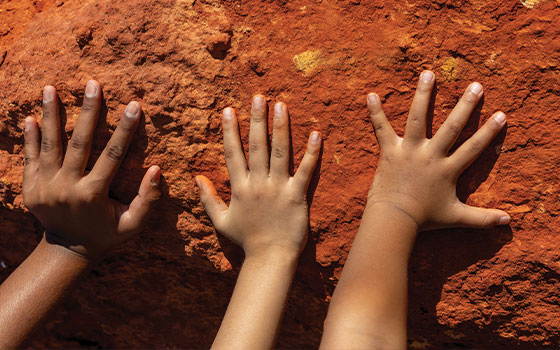Search
Research
Differences in stroke risk and cardiovascular mortality for Aboriginal and other Australian patients with atrial fibrillationStroke risk and cardiovascular mortality are markedly higher for Aboriginal than non-Aboriginal patients with atrial fibrillation, particularly for patients under 60
Research
Perinatal risk factors associated with skin infection hospitalisation in Western Australian Aboriginal and Non-Aboriginal childrenWe have quantified the relative influence of perinatal risk factors associated with skin infection hospitalisations in WA children
Research
Missing Voices: Profile, Extent, and 12-Month Outcomes of Nonfatal Traumatic Brain Injury in Aboriginal and Non-Aboriginal Adults in Western AustraliaThese findings suggest an urgent need for multisectoral primary prevention of traumatic brain injury
Research
Childcare Use and Its Role in Indigenous Child Development: Evidence from the Longitudinal Study of Indigenous Children in AustraliaRelatively disadvantaged children might benefit more from attending childcare, as indicated by the positive estimated effects found for those who never attended childcare
Research
Pediatric hospital admissions in Indigenous children: A population-based study in remote AustraliaWe analysed hospital admissions of a predominantly Aboriginal cohort of children in the remote Fitzroy Valley in Western Australia during their first 7 years.
Research
No evidence for impaired humoral immunity to pneumococcal proteins in Australian Aboriginal children with otitis mediaConserved vaccine candidate proteins from S.pneumoniae induce serum and salivary antibody responses in Aboriginal and non-Aboriginal children with history of OM
The Health of Aboriginal Children and Young People
Research
Start Stronger, Live Longer Resource Manual for Aboriginal Health WorkersThis resource kit for Aboriginal health workers is an exciting milestone in the Rio Tinto Aboriginal Health partnership with The Kids Research Institute Australia

ACCARE provides high level advice to the Institute's Director around strategic directions and operational elements relating to Aboriginal health research
Research
Healthy skin for children and young people with skin of colour starts with clinician knowledge and recognitionSkin conditions most frequently encountered in paediatric practice include infections, infestations, atopic dermatitis, and acne. Skin of colour refers to skin with increased melanin and darker pigmentation, and reflects global racial and ethnic diversity.
